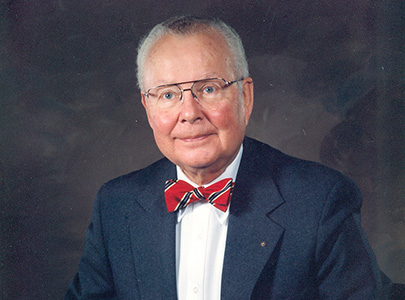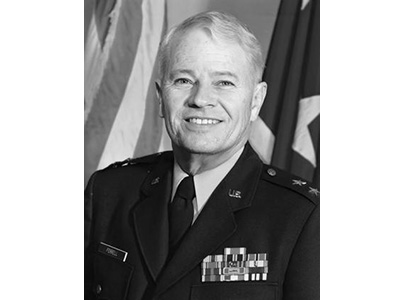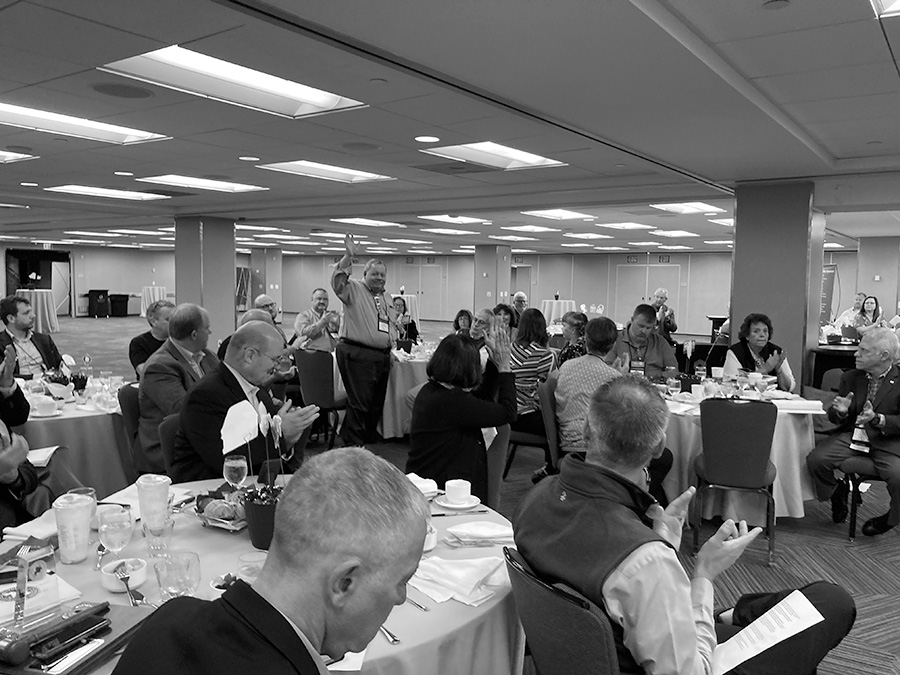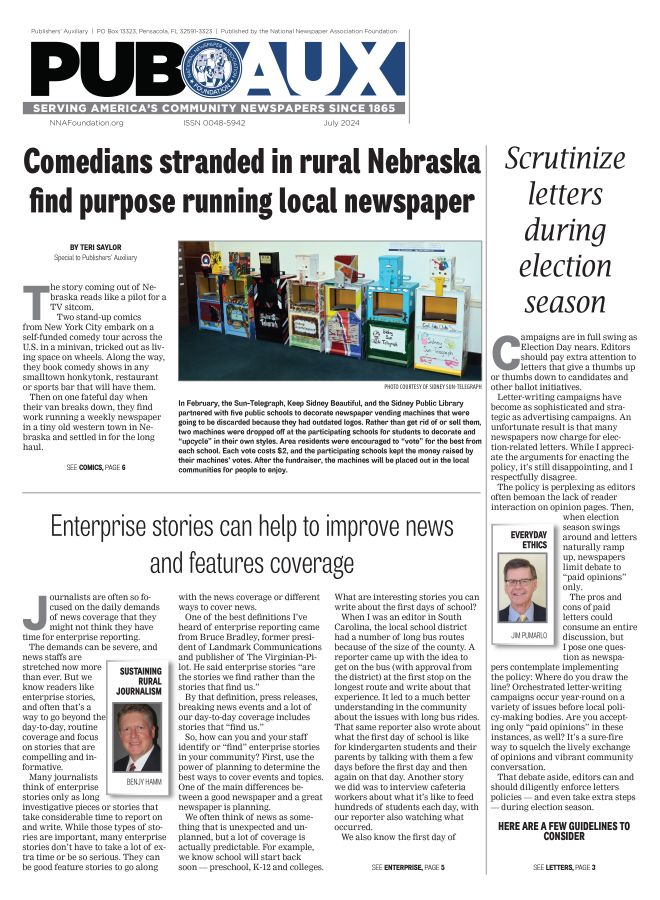Robert Wick, champion of art, newspapers and community, dies at 86
Feb 1, 2022
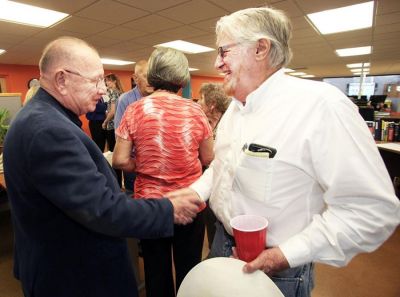
HERALD/REVIEW MEDIA
Robert Wick, who guided Wick Communications for nearly six decades, died Jan 13, 2022. He was 86.
Wick’s life was a blending of the simple and the complex — found in his art, public service and enjoyment of the printed word.
Soft-spoken yet pointed, Wick was as passionate about fighting a smelter operation in Douglas as he was about hand-watering thousands of seedlings he’d planted on his remote land in the Mule Mountains of Southeastern Arizona — the latter “a cathartic process which drew me more intensely to nature, its magic and wonder.”
FAMILY BUSINESS
Wick and his brother, Walter, purchased their uncle’s interest in Wick Communications in 1965, following his death. Their father, Milton Wick, and uncle, James Wick, founded the company when they acquired the family’s first newspaper in 1926 in Niles, Ohio.
Family members remain active in the business with Robert’s son, Francis Wick, serving as president and CEO, and Walter’s daughter, Rebecca Rogers, serving on the board of directors.
Walter and Robert Wick assumed full ownership of the company, which expanded to 27 publications, including the Herald/Review, in 1981, following the death of their father. Wick Communications, under their stewardship, today has holdings in 11 western states, including Arizona, Washington, Oregon and Colorado.
The brothers were inducted into the Arizona Newspapers Association Hall of Fame in 2004. Walter Wick died in 2016 of pancreatic cancer.
EARLY START
It was a family business, and Robert Wick learned it by starting at the bottom. He and his brother swept floors around the newspaper office in Niles, Ohio, then worked in various departments, learning the ropes.
He followed the family tradition and studied journalism at Kent State University, where he also played baseball and had dreams of playing professionally. At the same time, he was falling in love with art, and then he discovered he had a talent for it.
He recounted his first serious venture into art in a 2019 newspaper article as he was preparing for an exhibit at the Tucson Botanical Gardens.
Wick said his aunt was visiting at Christmas during his junior year in college, and she noticed him doodling with Play-Doh. “Sculpt a portrait of my husband,” she asked.
He said he couldn’t do it, but she insisted. He took photos of his uncle, then returned to school and asked the art department for guidance. They taught him how to make an armature, the framework for a sculpture, and he got to work.
“It came out better than anything in the class,” he said. “I was so dumbfounded; I didn’t realize I had this in me.”
It shouldn’t have come as a surprise. At age 5, “my father taught me to draw with volume,” he said. “In the first grade, I was drawing with three dimensions, and by the fourth grade, I was conscious of Frank Lloyd Wright and was trying to design ‘futuristic architecture.’”
In his teens, he put art aside until rediscovering it in college.
Wick earned a bachelor’s degrees in journalism and fine arts from Kent State University and a master of fine arts from Cranbrook Academy of Art in Bloomfield Hills, Michigan, one of the top art schools in the nation.
He went on to teach sculpture and drawing at Kent State and at the State University of New York, Fredonia. He and Walter Wick opened the Wick Poetry Center at Kent State in 1984 in memory of their sons.
Robert’s 17-year-old son, Stanley, was killed by a drunk driver on June 30, 1980. In a tragic coincidence, Stanley’s death came seven years to the day after Tom Wick, the son of Walt, also was killed in a car accident.
For more than 50 years, Wick used a combination of bronze sculptures infused with living plants to convey his message of our oneness with the Earth. He’d first experimented with plants in art in the late ‘60s.
“I placed a piece of ivy in the split,” he said of a mask he was making. “I saw the ivy as a sign of creativity, others saw it as death, others as life. I liked the way it created another layer of meaning to the head, the work of art. From that point on, I could not consider creating sculptures without living plants, trees or vegetation of some kind.”
The technique turned heads in the art world, and he exhibited, among other places, at the Cleveland Museum of Art, Akron Art Museum, Austin Museum of Art and Tucson Museum of Art. But his favorite place was showing his art in botanical gardens “because of the settings and marvelous plant life. The sculptures truly appear to belong in such environments with the trees and plants growing from the sculpture.”
“We tend to think of evolution as biological, but it’s a process toward greater complexity,” he said. “This art is trying to show that we are connected to nature, and we need to know that, be conscious of it, and what that means for us.”
But art never crowded out the journalist in him. He found himself producing the editorial pages for the Williston (North Dakota) Herald in the 1960s, and in the ’80s was instrumental in shutting down the Phelps Dodge smelter in Douglas and limiting the expansion of the smelter in nearby Cananea, Mexico. He also pushed to lower by 90% the sulfur dioxide output at a new smelter in Nacosari, Mexico.
“We were able to change Southern Arizona skies to the cleanest in 100 years,” he said. “It would have been the most heavily polluted landscape in North America without these changes.”
In the early 1990s, Robert Wick began a nine-year effort with architect Stan Schuman “visualizing my dream” — a home with primary shapes, a pyramid right–angle triangle and a trapezoid.
“Ultimately, I looked at the house as a work of art, much like the sculptures containing both living plants and trees, which grow off the buildings as well as surrounding the sculptures with abundant life,” he said.
FRIENDS REMEMBER
Eric Kardahl, CEO and president of the Amerind Museum in Dragoon, said he met Wick in 2010. Kardahl, who is an archaeologist, said Wick invited him to his house. They became fast friends.
“Such a wonderful, wonderful man,” Kardahl said about Wick.
David Hassler, director of the Wick Poetry Center at Kent State University, met Wick in 1994 after Hassler won a poetry contest sponsored by the Kent State University Press.
The award — aptly titled the Wick Ohio Chapbook Award — was given to Hassler at a dinner celebrating the poetry center’s 10th anniversary. He met Wick and his brother Walter at the dinner and was immediately struck by the siblings’ charisma.
“They were both big-hearted and interested in helping young artists,” he said.
One of his fondest memories of Bob Wick was the six summers he spent with other students at Wick’s house.
“The students spent time talking to Bob, and he shared his ideas of creativity,” Hassler said. “Their writing was inspired by Bob. He planted seeds of creativity, and we carry them in our heart.”
Cynthia Conroy, founder of the Bisbee 1000, The Great Stair Climb and Bisbee Vogue Inc., had a close friendship spanning more than two decades.
“Bob has created so many remarkable, beautiful and edifying expressions in word, deed, drawings and sculptures,” Conroy said. “I cannot begin to express my gratitude for his influence on my life and work. His humility, love for the Earth, and brilliant spirit were always part of every conversation.
“I adored Bob Wick and will miss him greatly.”
Those who knew Wick said he was a philanthropist and exceptional artist, but they also remember him as a charismatic individual who made others feel important.
Karen Nicodemus, past president of Cochise College, met Bob Wick and his wife, Estellean, in 1998. She said they were generous with donations to the school, as well as with their time.
He donated art to the school, but Wick was also interested in the education that the area’s young people were receiving.
Nicodemus remembers Wick as a kind man who cared about others.
“He made you feel important when he spoke to you,” Nicodemus said.
Arizona Community Foundation CEO Steve Seleznow said, “Bob was a humanitarian in the truest sense of the word. All of us at the Arizona Community Foundation were especially honored to support his philanthropic vision and the Robert J. Wick Family Foundation.”
Kathy Orchekowsky, member of the board of directors of the Boys and Girls Club of Sierra Vista, said club officers were saddened by the death of Wick.
“Mr. Wick and the entire Wick family have been generous contributors of our club and the youth in our community. We have counted on their support for a number of our club campaigns over our 25 years of providing a safe place for kids.”


